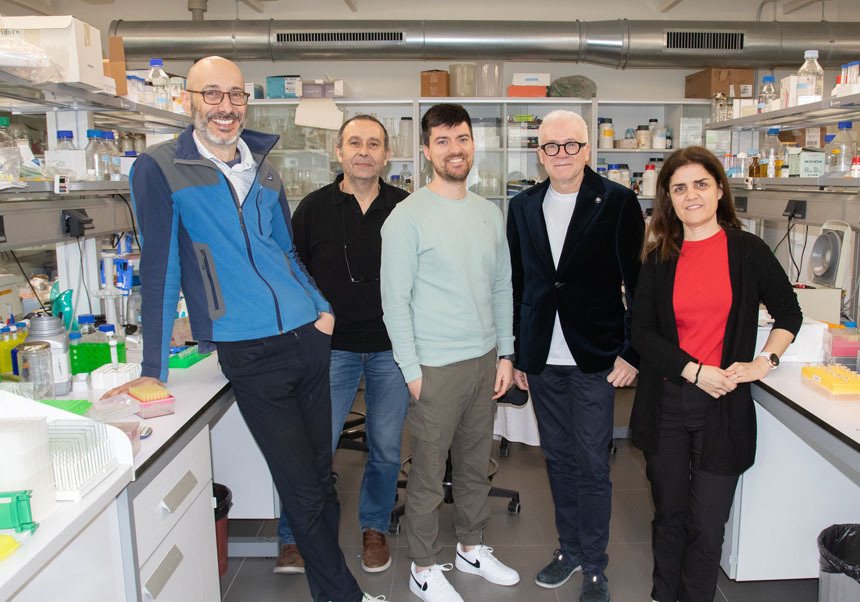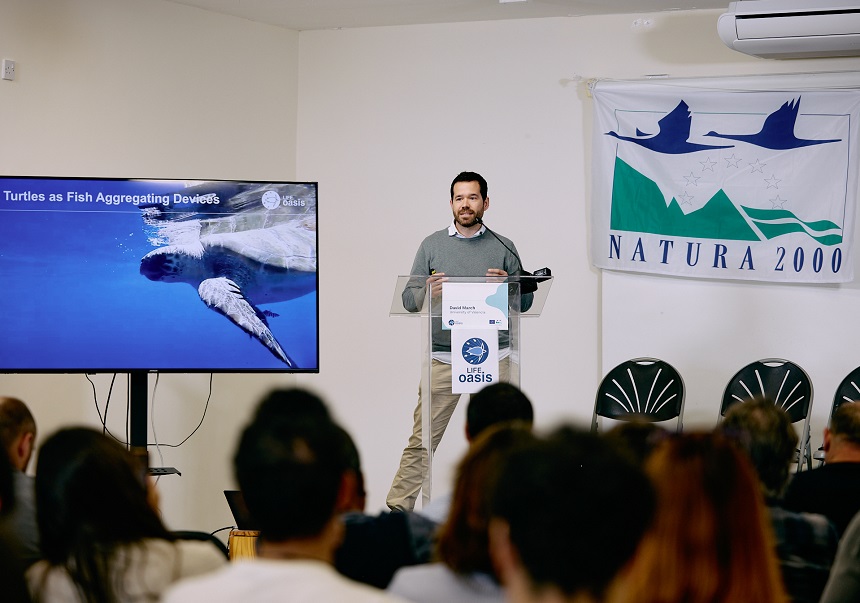New scale developed to understand protein behaviour in biological membranes
- Scientific Culture and Innovation Unit
- February 19th, 2025

A research team from the Department of Biochemistry and Molecular Biology of the University of Valencia, in collaboration with the University of California-San Francisco and Stockholm University, has developed a new scale that reveals the preferences of amino acids for positioning within a membrane environment. The study, published in Science Advances, provides a fundamental tool for better understanding protein folding and insertion into membranes—an essential process for the function of many proteins involved in diseases and key biological processes. Additionally, it also provides a valuable resource for designing synthetic proteins with biomedical and biotechnological applications.
The new scale reveals amino acid preferences for positioning within a membrane environment, either in transmembrane regions of the core or directly arranged in a helical form at the interface. These two regions make up biological membranes and can be easily distinguished by their physicochemical properties: the membrane core is the highly hydrophobic inner region due to the presence of hydrocarbon chains of fatty acids, while the membrane interface is the transition zone between this hydrophobic core and the aqueous medium, where the polar heads of the lipids are located.
“Our study offers an unprecedented insight into how amino acid sequences determine whether a protein inserts into the membrane or remains attached to the surface, at the interface between the membrane and the aqueous medium. This not only helps us to better understand biological mechanisms, but also opens new avenues for the design of proteins and peptides with therapeutic applications”, highlights Ismael Mingarro, professor in the Department of Biochemistry and Molecular Biology at the University of Valencia and principal investigator and coordinator of the study.
Biological membranes are essential structures for life, composed of a lipid bilayer into which proteins that perform critical functions, such as molecular transport and cell signalling, are inserted. The insertion of these proteins into the membrane is a complex process that depends on interactions between the protein’s amino acids and the lipid environment. While sequences that promote transmembrane insertion have been extensively studied, until now, there was no biological scale quantifying amino acid preferences for positioning at the membrane interface, a key region for many functional proteins.
The research team designed an experimental system based on protein glycosylation in biological membranes to distinguish between three possible states of a peptide sequence: soluble in water, bound to the membrane surface or inserted as a transmembrane region. Using this system, the researchers determined the apparent transfer energies (ΔGapp) for each of the 20 naturally occurring amino acids, allowing them to create a scale quantifying their tendency to be located at the membrane interface or within the transmembrane region.
“This scale allows us to establish the basis for predicting how an amino acid sequence will behave in a membrane as a whole, which is essential for modulating the function of many proteins”, explained Brayan Grau, the study’s first author.
The results showed that, although the scales of transfer to the membrane interface and to the hydrophobic core are correlated, there are key differences for certain amino acids. For instance, positively charged residues such as arginine and lysine have a strong preference for the membrane interface, as do aromatic residues such as tryptophan and tyrosine. These findings are consistent with previous biophysical studies suggesting that these amino acids play an important role in stabilising proteins at the membrane interface.
Furthermore, the study compared experimentally derived biological scales with scales based on structural data from membrane proteins and found a significant correlation. This validates the experimental approach and suggests that the developed scales may be useful for the rational design of membrane proteins and peptides with specific functions.
“This work not only helps us to better understand the natural mechanisms of protein insertion into membranes, but also provides a valuable tool for designing synthetic proteins with biomedical and biotechnological applications, such as antimicrobial or fusogenic peptides”, explains Luis Martínez-Gil, researcher at the University of Valencia.
The study was made possible through collaboration between experts in membrane biophysics and structural biology, combining computational analysis, biophysical studies and advanced molecular biology techniques. The research was funded by the Spanish Ministry of Science, Innovation and Universities and the Generalitat Valenciana through the Prometeo Programme for Research Groups of Excellence.
Article reference: Grau et al., Sci. Adv. 11, eads6804 (2025). Link: https://www.science.org/doi/full/10.1126/sciadv.ads6804
File in: Investigació a la UV , Internacionalització recerca , Facultat de Ciències Biològiques , Cultura Científica , Grups de recerca , Difusió i comunicació científica , Recerca, innovació i transferència
















